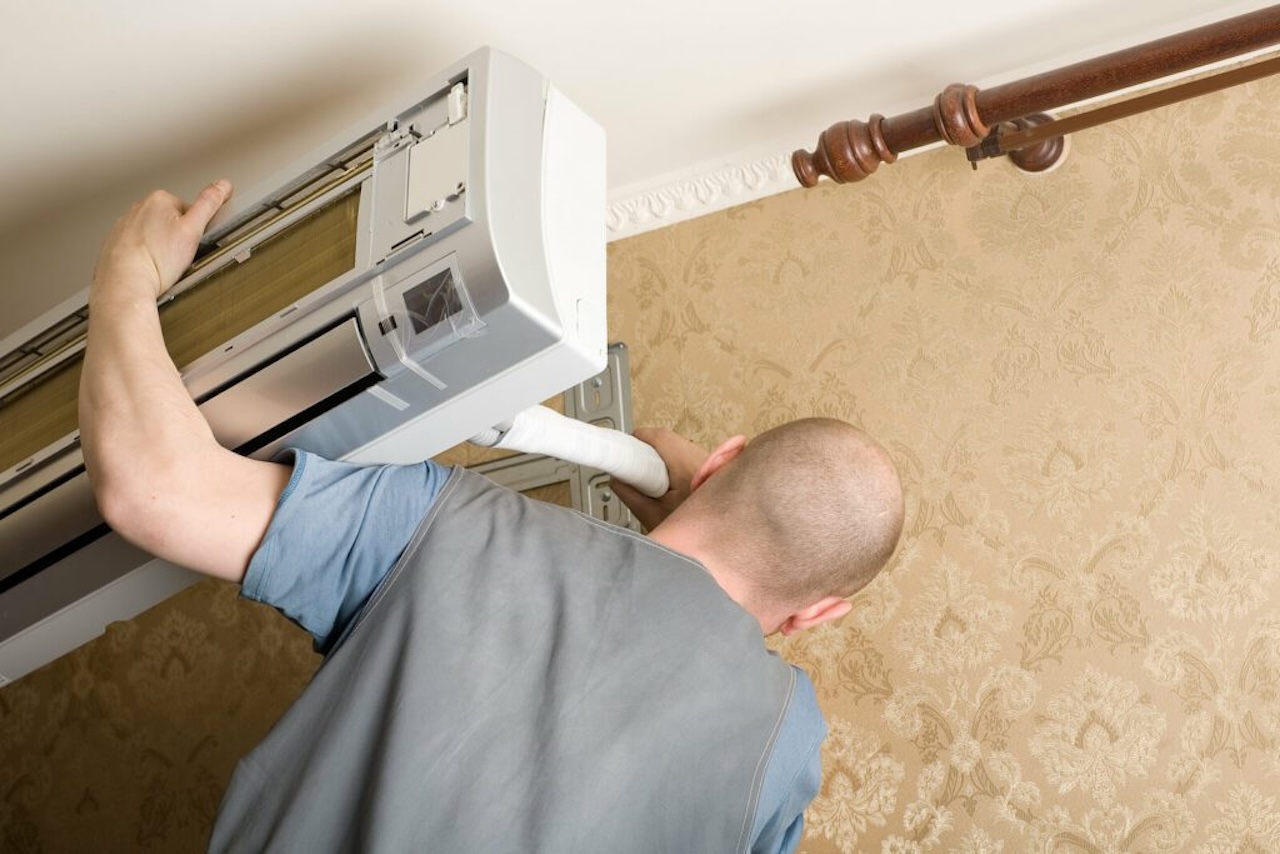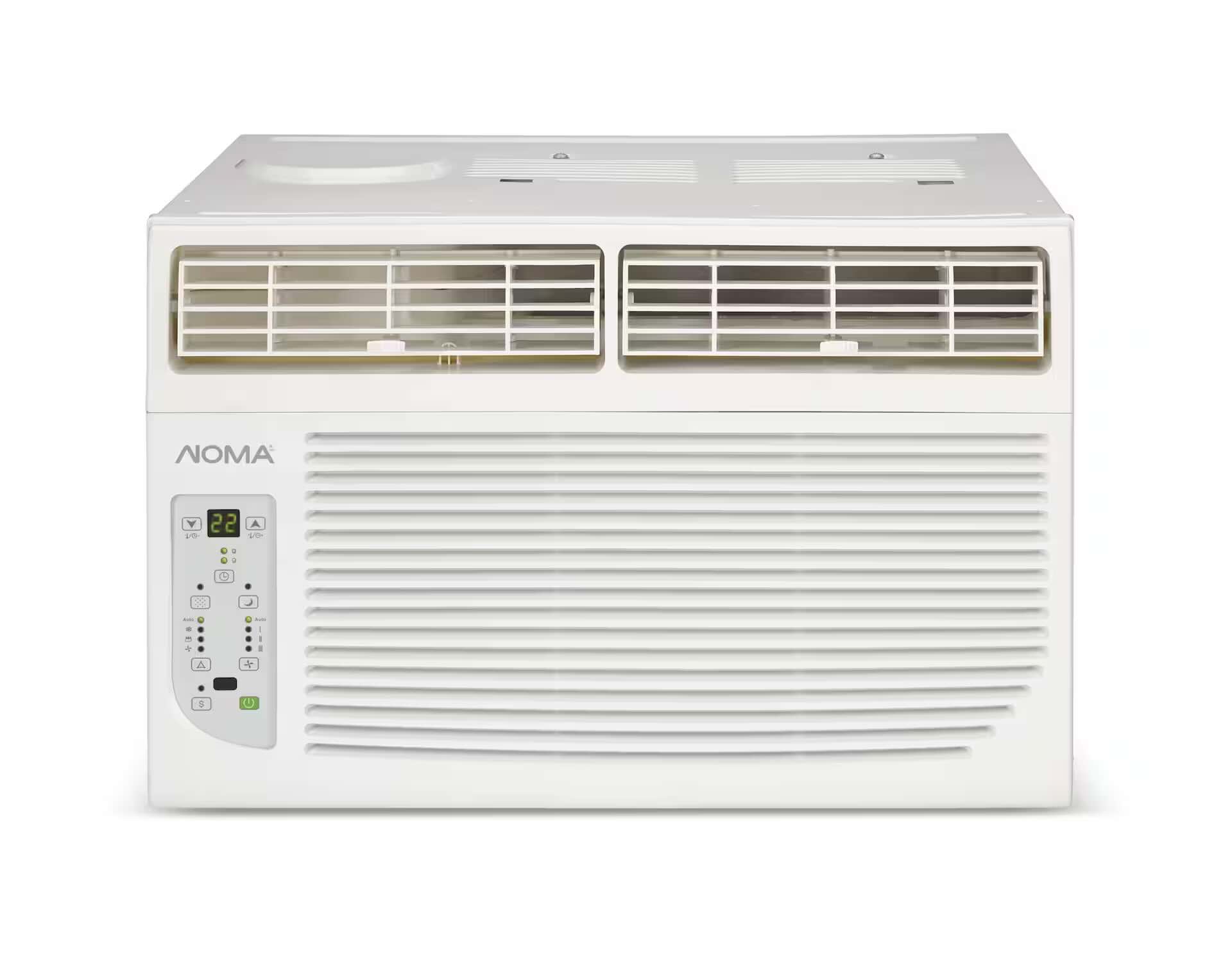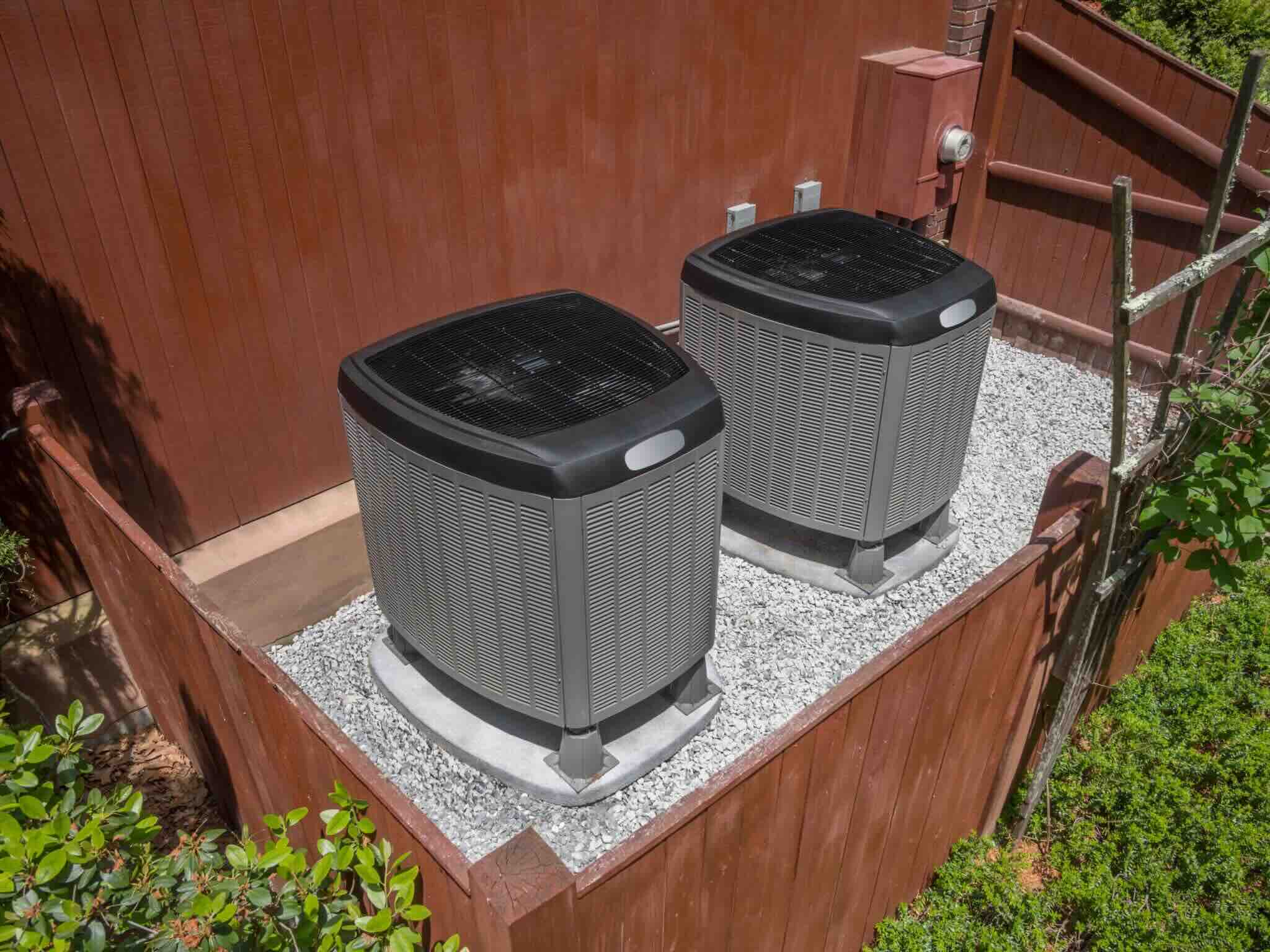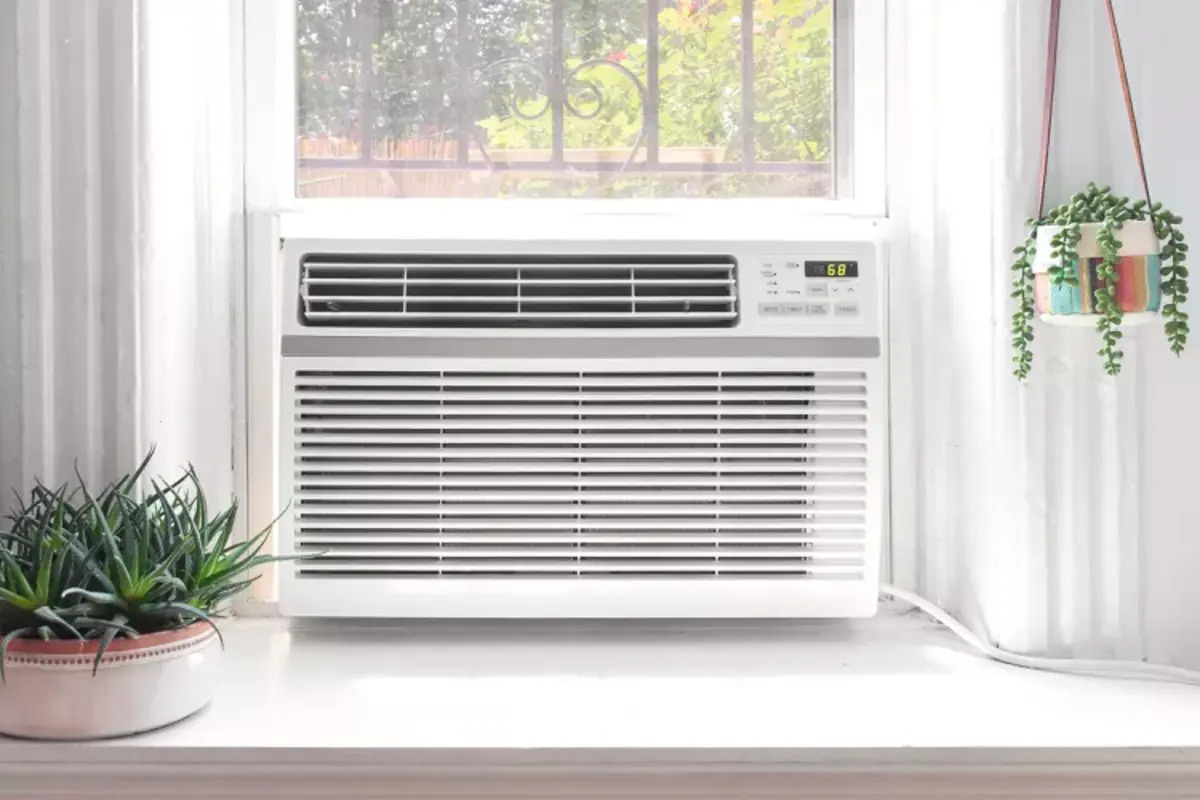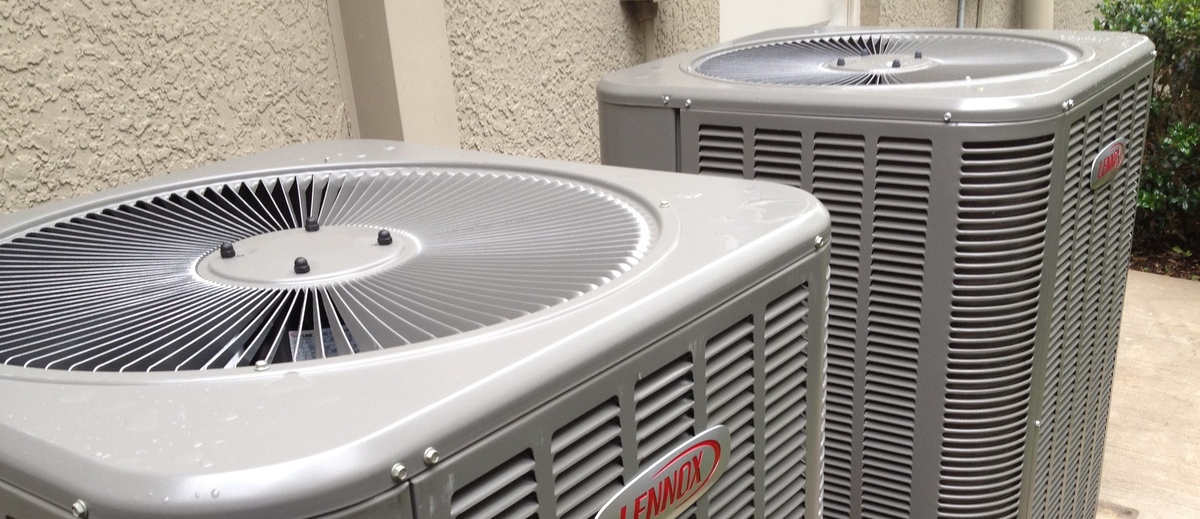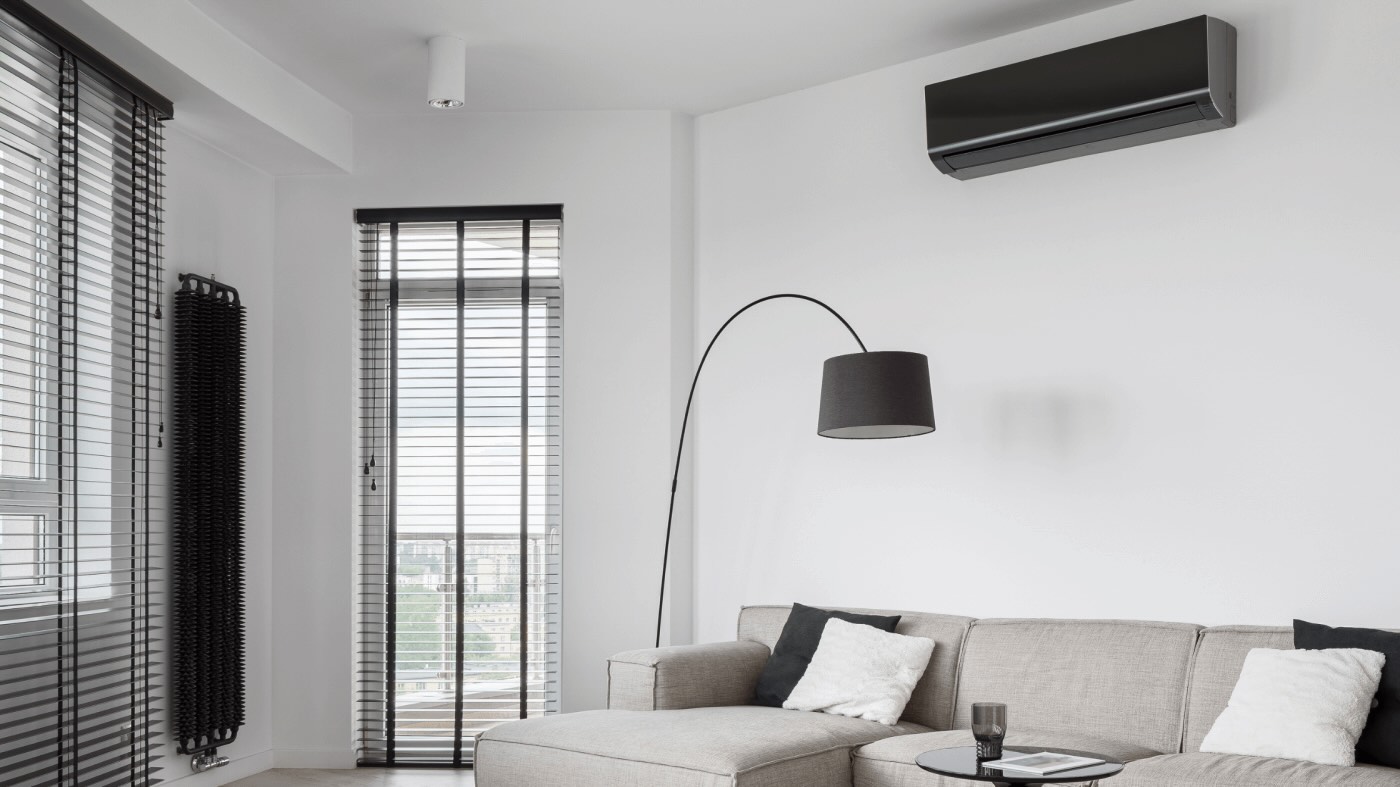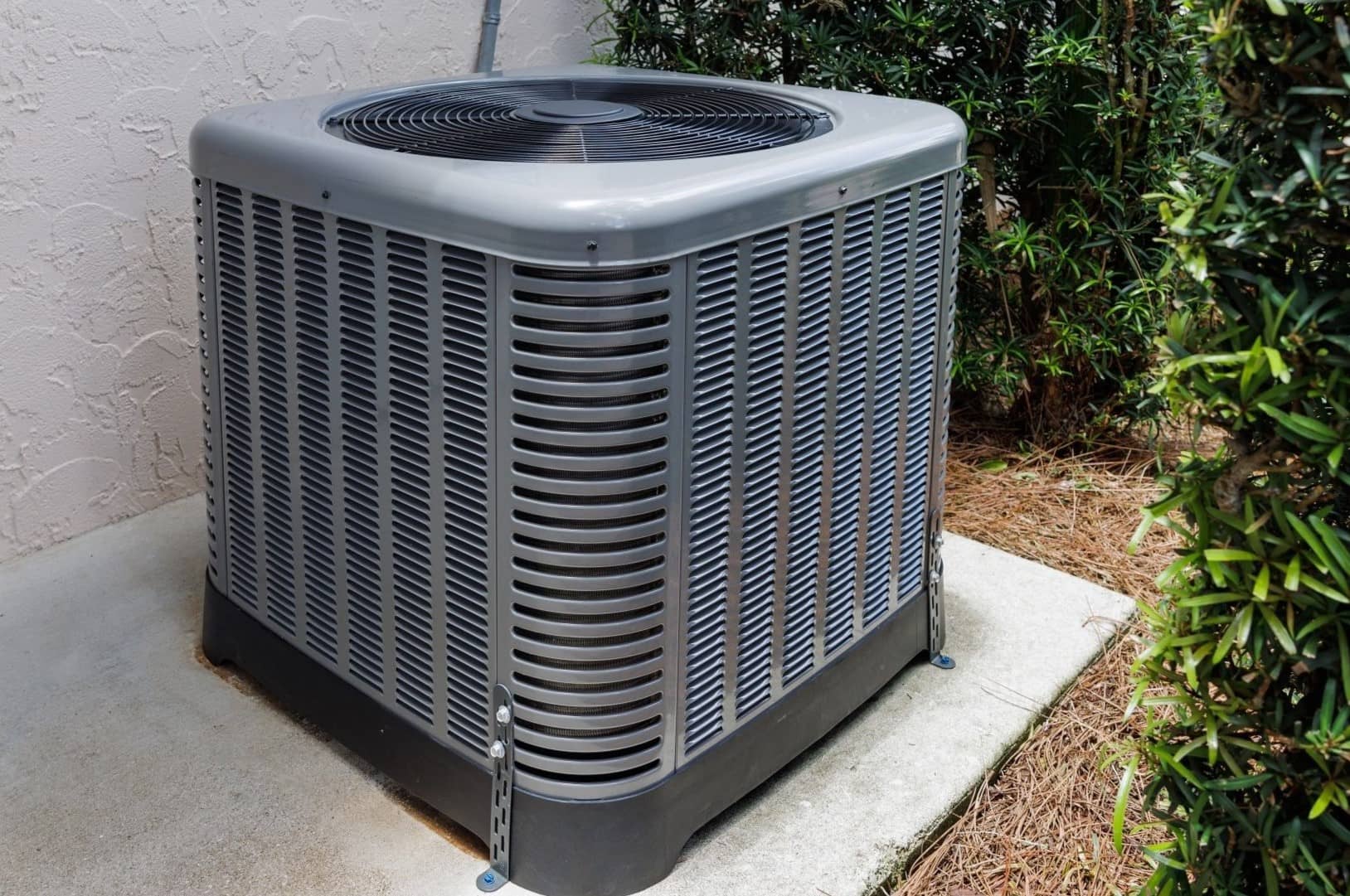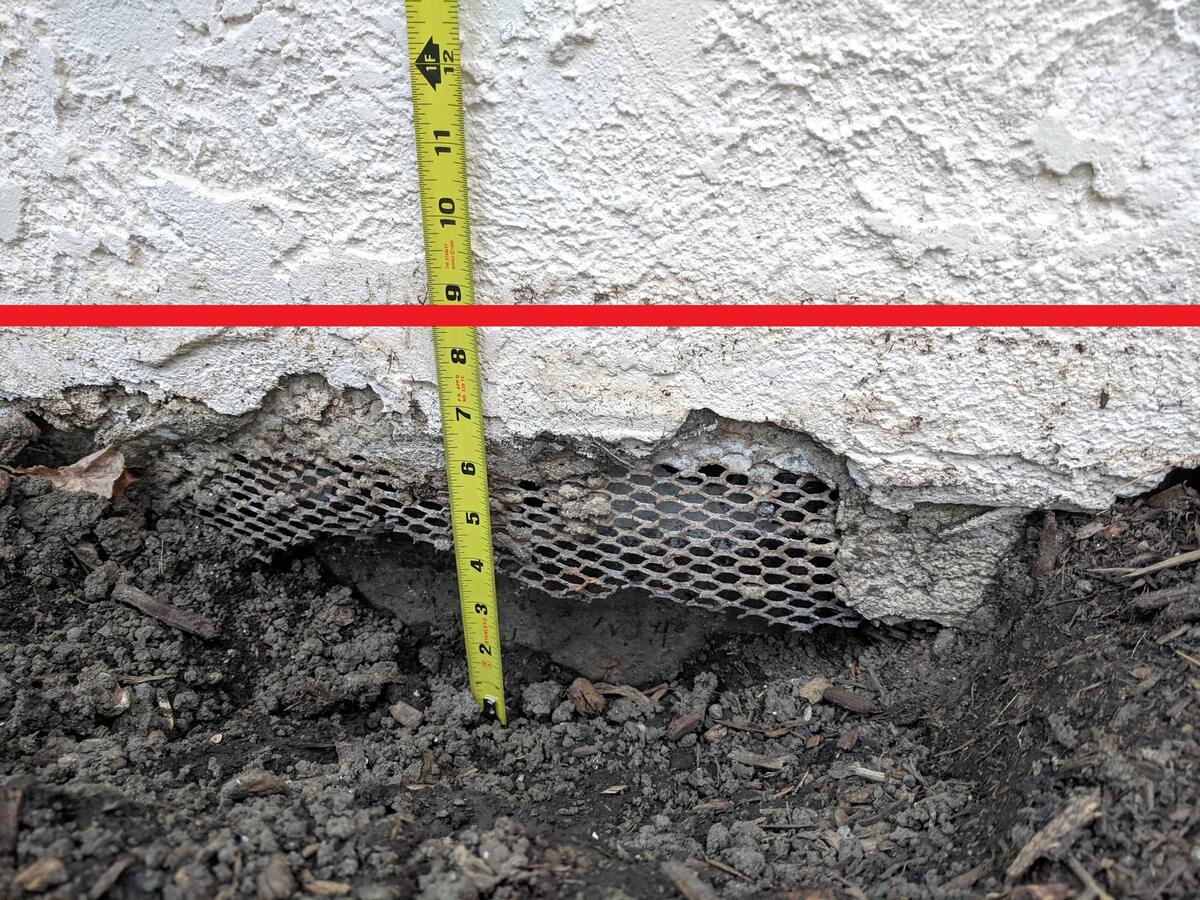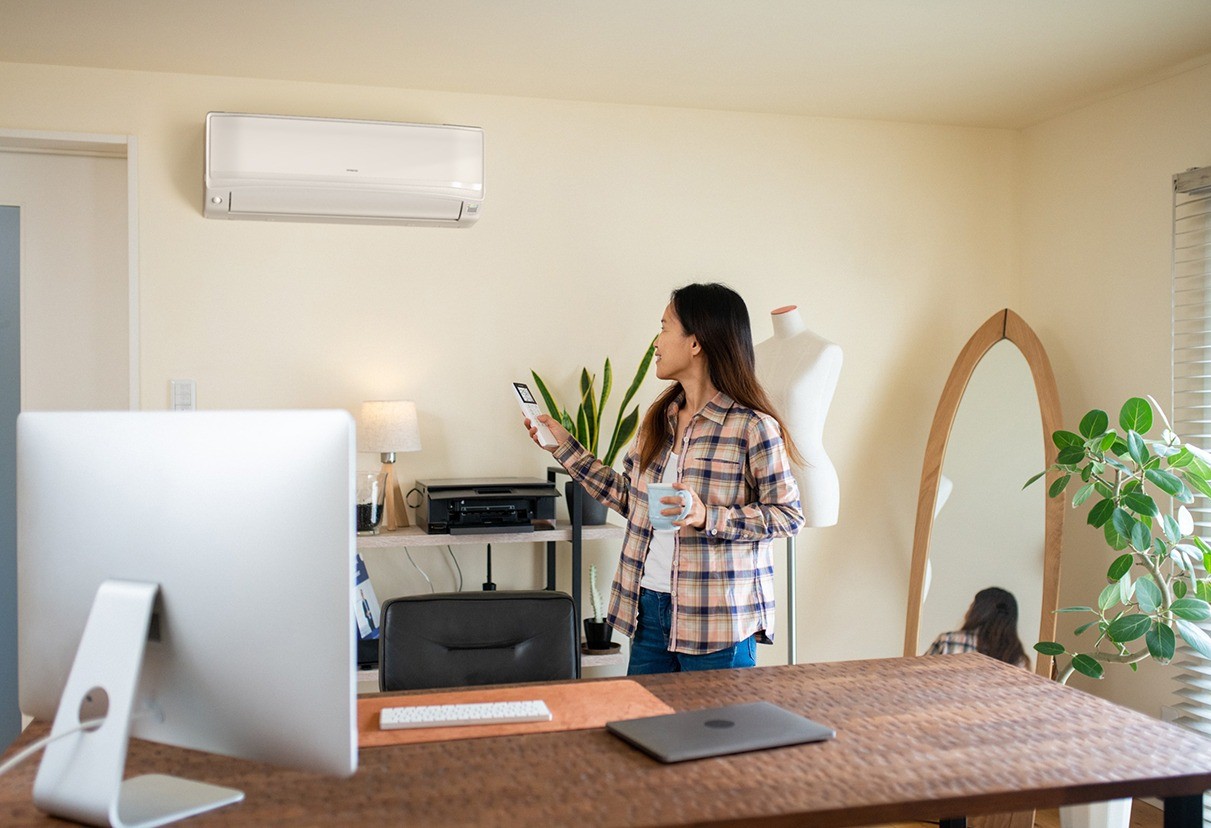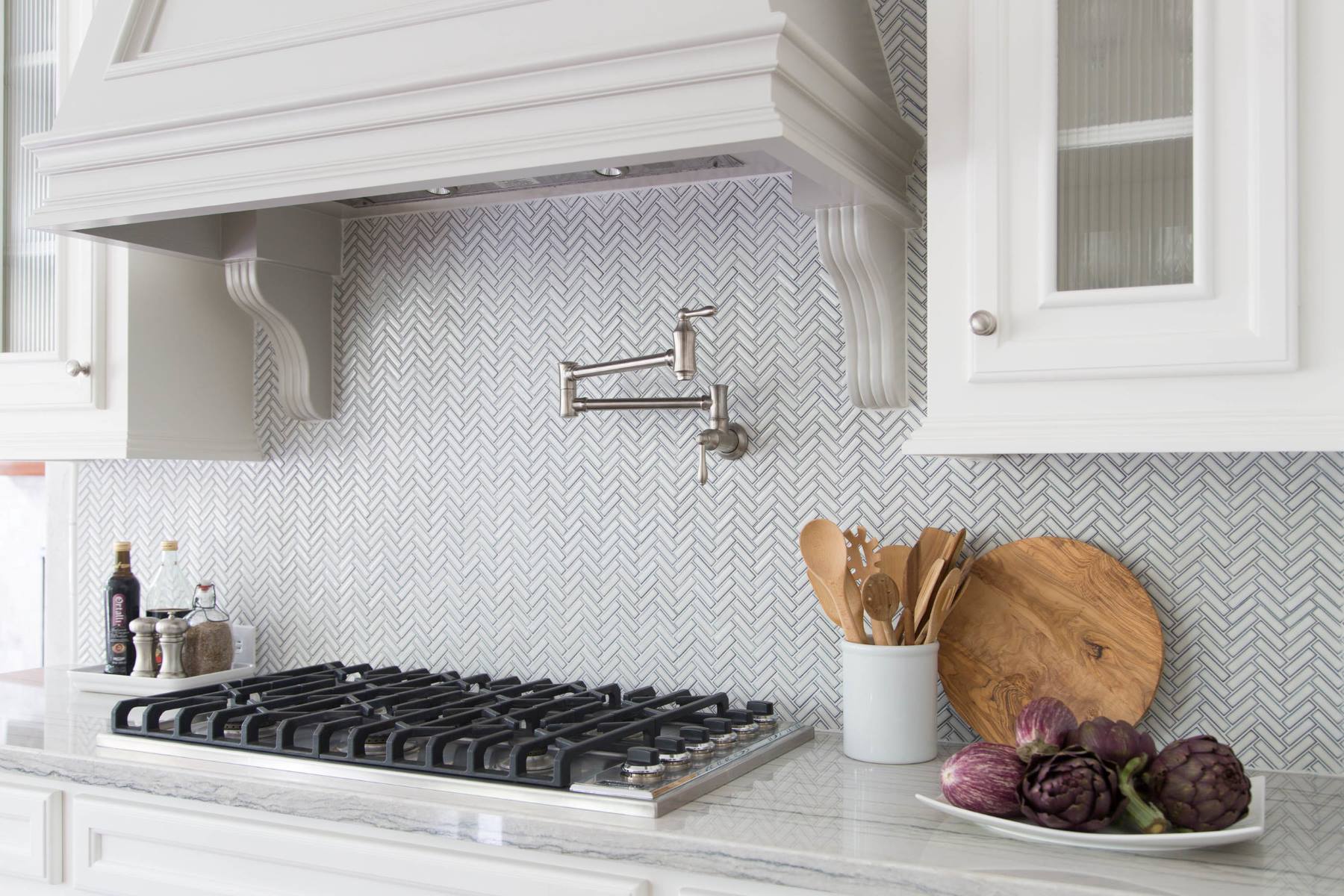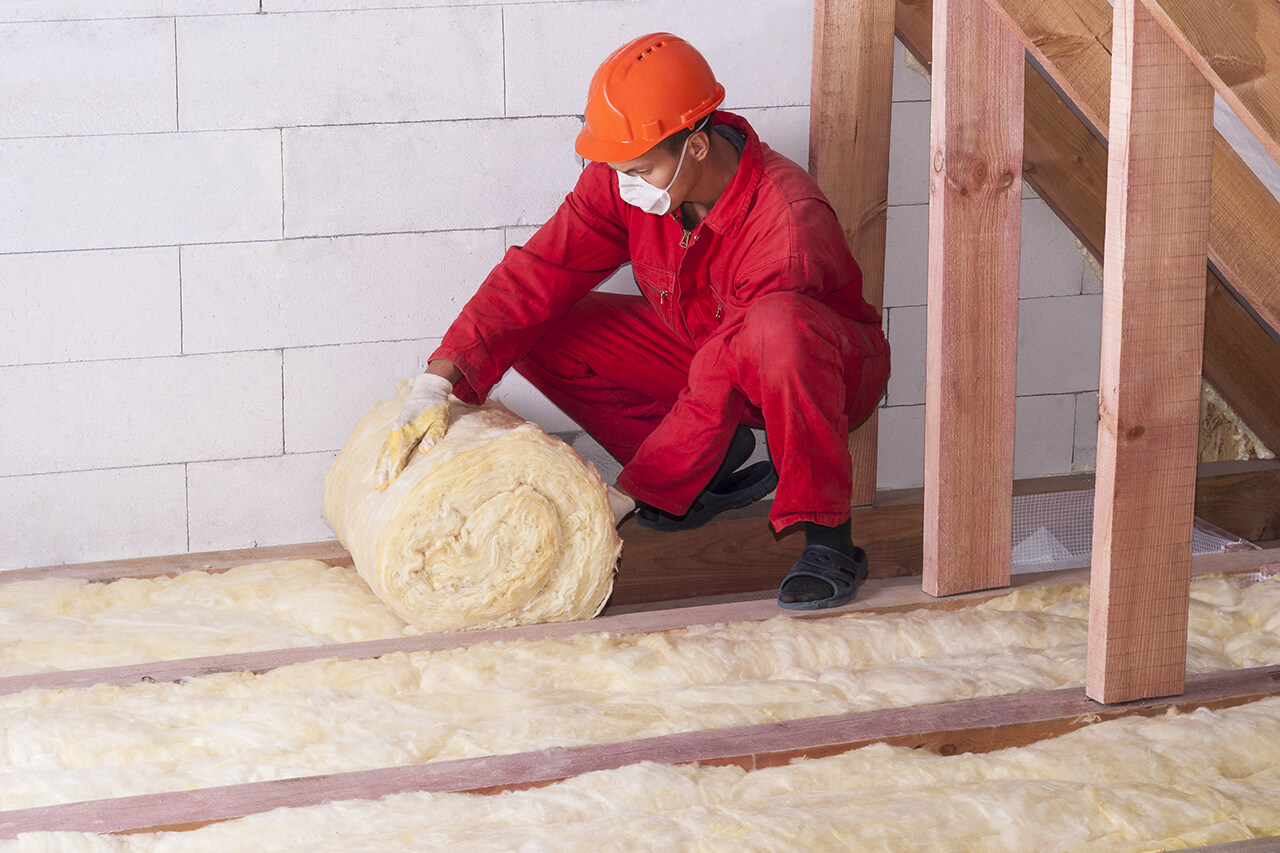Home>Home Maintenance>How Many Square Feet Does A 2-Ton Air Conditioner Cool
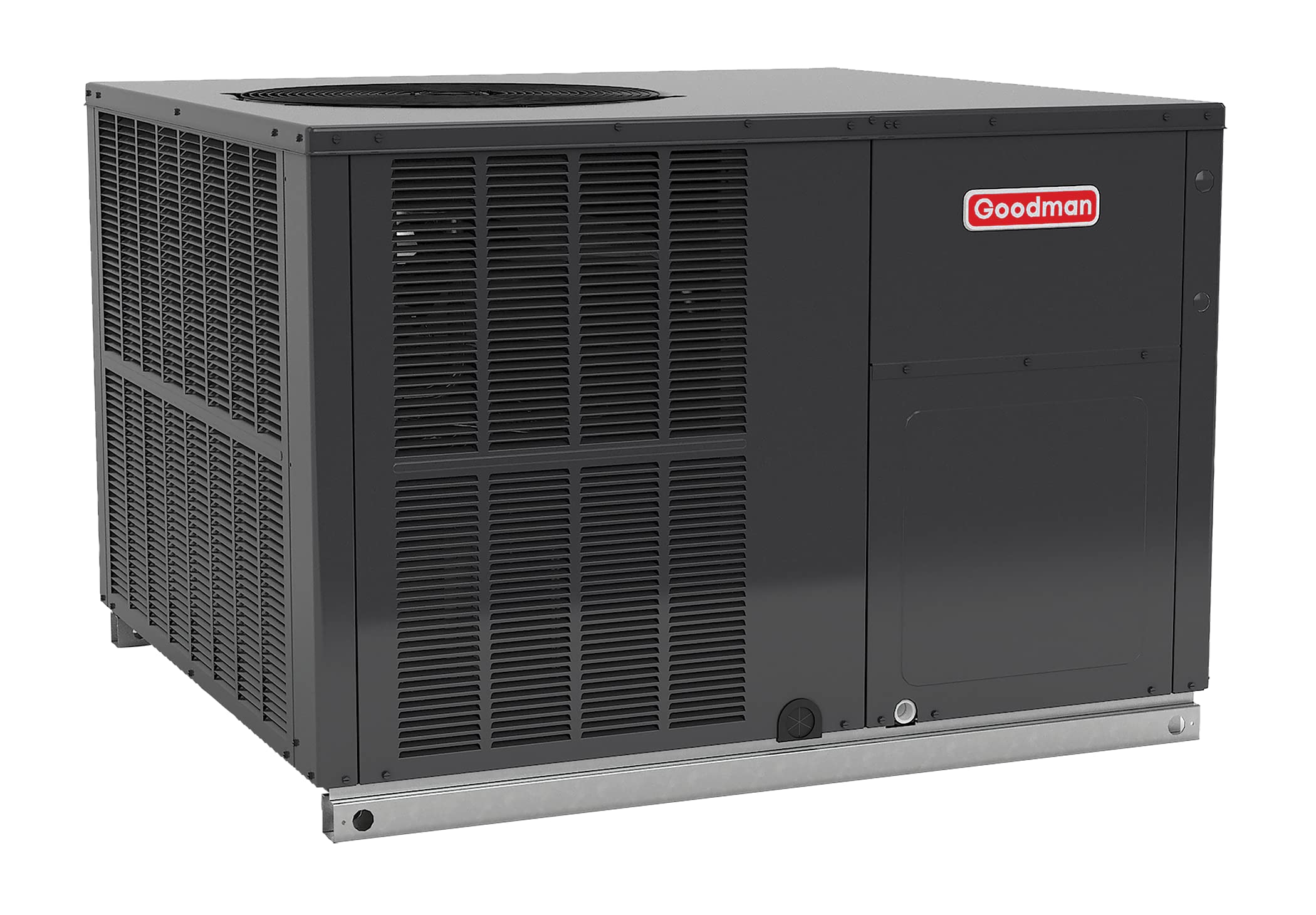

Home Maintenance
How Many Square Feet Does A 2-Ton Air Conditioner Cool
Modified: March 7, 2024
Find out how big of an area a 2-ton air conditioner can cool in square feet. Get the answer and more home maintenance tips here.
(Many of the links in this article redirect to a specific reviewed product. Your purchase of these products through affiliate links helps to generate commission for Storables.com, at no extra cost. Learn more)
Introduction
When it comes to keeping your home cool and comfortable during hot summer months, a reliable air conditioner is essential. But have you ever wondered how much space a 2-ton air conditioner can effectively cool? Determining the cooling capacity of an air conditioner is crucial in ensuring efficient and optimal performance.
In this article, we will delve into the world of air conditioner cooling capacity and explore how many square feet a 2-ton air conditioner can effectively cool. By understanding the factors that affect cooling capacity and how to calculate the area coverage, you will be well-equipped to make informed decisions for your home maintenance needs.
So, let’s dive in and uncover the secrets of air conditioner cooling capacity!
Key Takeaways:
- A 2-ton air conditioner can effectively cool an area of 1,000 to 1,200 square feet, but factors like insulation and climate can impact its performance. Consider consulting a professional for accurate sizing.
- Understanding the cooling capacity of a 2-ton air conditioner involves calculating square footage, considering climate conditions, and converting BTUs to square feet. Professional advice and regular maintenance are crucial for optimal performance.
Read more: How Many Btu In 2 Ton Air Conditioner
Understanding Air Conditioner Cooling Capacity
Before we delve into the specifics of how many square feet a 2-ton air conditioner can cool, let’s first understand what cooling capacity means in the context of air conditioners.
Cooling capacity refers to the amount of heat an air conditioner can remove from the indoor air in a given period. It is measured in British Thermal Units (BTUs) per hour. The higher the BTU rating, the greater the cooling capacity of the air conditioner.
When it comes to air conditioners, the cooling capacity is often expressed in terms of tons. One ton of cooling capacity is equal to 12,000 BTUs per hour. Therefore, a 2-ton air conditioner would have a cooling capacity of 24,000 BTUs per hour.
It’s important to note that cooling capacity alone does not solely determine the effectiveness of an air conditioner. Factors such as insulation, room size, ventilation, and climate conditions also play a significant role in determining the overall cooling performance.
Now that we have a basic understanding of cooling capacity, let’s explore the factors that can affect the cooling capacity of an air conditioner.
Factors that Affect Cooling Capacity
Several factors can influence the cooling capacity of an air conditioner. Understanding these factors will help you determine the appropriate cooling capacity for your space and ensure optimal performance.
1. Insulation: The level of insulation in your home is crucial in maintaining the desired temperature. Poor insulation can result in energy loss and decreased cooling efficiency.
2. Room Size: The size of the room or space you need to cool plays a significant role in determining the cooling capacity required. Larger spaces will require a higher cooling capacity to effectively cool the area.
3. Ceiling Height: The height of the ceiling can impact the airflow and distribution of cooled air. Higher ceilings may require additional cooling capacity to maintain comfortable temperatures.
4. Windows and Sun Exposure: The number of windows in a room and their orientation to the sun can affect the heat gain. Rooms with more windows or those exposed to direct sunlight will require additional cooling capacity.
5. Climate Conditions: The local climate plays a crucial role in determining the cooling capacity needed. Hotter climates will require higher cooling capacities to combat the higher ambient temperatures.
6. Occupancy and Heat Sources: The number of occupants in a room and the presence of heat-generating appliances can contribute to the heat load. More occupants or heat-producing devices may require a higher cooling capacity.
By considering these factors, you can get a better understanding of the cooling capacity your space requires and select an air conditioner that meets your needs.
Determining the Cooling Capacity of a 2-Ton Air Conditioner
Now that we have covered the factors that can affect cooling capacity, let’s explore how to determine the cooling capacity of a 2-ton air conditioner for your specific space.
1. Calculate the Square Footage: Start by measuring the length and width of the room or space you want to cool. Multiply the two measurements to get the square footage. For example, if the length of the room is 20 feet and the width is 15 feet, the square footage would be 300 square feet.
2. Adjust for Factors: Take into account the factors that can affect cooling capacity, such as insulation, ceiling height, windows, and climate conditions. Make adjustments to the square footage calculation if needed. For example, if the room has poor insulation, you may need to increase the square footage by a certain percentage.
3. Convert to BTUs: Once you have the adjusted square footage, you can determine the required BTU rating. As a rule of thumb, for every 500-600 square feet, you would need 1 ton of cooling capacity. Since a 2-ton air conditioner has a cooling capacity of 24,000 BTUs per hour, you can use this conversion to determine the appropriate BTU rating for your square footage.
4. Consider Other Factors: Keep in mind that the calculated BTU rating is a general guideline. It’s important to consider additional factors that may affect the cooling capacity, such as your specific climate, the number of occupants, and any heat-generating appliances in the room.
By following these steps, you can get a rough estimate of the cooling capacity needed for your space and determine if a 2-ton air conditioner is suitable.
Now that we have examined how to determine the cooling capacity, let’s explore the square footage coverage of a 2-ton air conditioner.
A 2-ton air conditioner can cool around 800-1000 square feet of space. However, factors like insulation, ceiling height, and climate can affect its effectiveness.
Area Coverage Based on Square Feet
When it comes to air conditioners, the cooling capacity is often associated with a certain area coverage. While there are no exact guidelines, we can provide a general estimate of the square footage that a 2-ton air conditioner can effectively cool.
A 2-ton air conditioner with a cooling capacity of 24,000 BTUs per hour can typically cool an area ranging from 1,000 to 1,200 square feet. However, it’s important to note that this estimate can vary based on factors such as the climate, insulation, and other variables we discussed earlier.
For smaller spaces or rooms, such as bedrooms or home offices, a 2-ton air conditioner can provide ample cooling capacity. It can effectively maintain comfortable temperatures and create a refreshing environment.
On the other hand, for larger spaces, such as living rooms or open concept areas, a 2-ton air conditioner may not be sufficient on its own. It’s important to consider supplementary cooling options or look into higher cooling capacities to ensure even distribution of cool air.
Keep in mind that these estimates are general guidelines and it’s recommended to consult with a professional HVAC technician to determine the appropriate cooling capacity for your specific needs.
Now that we have discussed the area coverage based on square footage, let’s explore how to convert BTUs to square feet for a more accurate assessment of cooling capacity.
Converting BTUs to Square Feet
Converting BTUs to square feet can help you determine the cooling capacity required for a specific area. While the conversion is not an exact science, it provides a useful estimate based on industry standards.
1. Determine the BTU Rating: Start by identifying the BTU rating of the air conditioner you are considering. For a 2-ton air conditioner, the cooling capacity is typically 24,000 BTUs per hour.
2. Consider Climate Conditions: Take into account the climate conditions of your location. If you live in a hot and humid climate, you may need a higher BTU rating to effectively cool the space.
3. Calculate the BTUs per Square Foot: Use the general guideline of 20 BTUs per square foot to estimate the cooling capacity needed. Divide the BTU rating by 20 to get an approximate square footage coverage. For a 2-ton air conditioner with a cooling capacity of 24,000 BTUs per hour, the estimated square footage coverage would be 1,200 square feet (24,000 BTUs / 20 BTUs per square foot = 1,200 square feet).
Keep in mind that this conversion provides a rough estimate and should be used as a reference point. It’s always recommended to consult with a professional HVAC technician to ensure accurate sizing and to account for specific factors that may impact cooling capacity.
Now that we have covered the conversion of BTUs to square feet, let’s explore other considerations you should keep in mind when determining the cooling capacity.
Other Considerations for Cooling Capacity
While square footage and BTU ratings are essential factors in determining cooling capacity, there are additional considerations to keep in mind when selecting the right air conditioner for your space.
1. Efficiency Ratings: Look for air conditioners with high Seasonal Energy Efficiency Ratio (SEER) ratings. Higher SEER ratings indicate better energy efficiency, which can result in lower cooling costs over time.
2. Zoning and Multiple Units: Consider the layout of your home and whether zoning or multiple units may be beneficial. Zoning allows you to control the temperature in different areas independently, optimizing comfort and energy efficiency.
3. Insulation and Weatherization: Improving insulation and weatherization in your home can enhance the effectiveness of your air conditioner. Proper insulation and sealing of gaps and cracks can prevent heat transfer and ensure efficient cooling.
4. Regular Maintenance: Regular maintenance of your air conditioner is crucial to ensure optimal performance and extend its lifespan. Regularly clean or replace air filters and schedule professional maintenance to keep the unit operating at its best.
5. Professional Advice: It’s always recommended to consult with a professional HVAC technician to accurately assess your cooling needs. They can consider factors such as ceiling height, window orientation, and any unique characteristics of your home to provide personalized recommendations.
By considering these additional factors, you can make a well-informed decision when selecting an air conditioner and ensure optimal cooling efficiency in your home.
Now that we have explored the various considerations for cooling capacity, let’s wrap up our discussion.
Conclusion
When it comes to keeping your home cool and comfortable, understanding the cooling capacity of an air conditioner is crucial. While a 2-ton air conditioner has a cooling capacity of 24,000 BTUs per hour, it’s important to consider various factors to determine its effectiveness in cooling your space.
Factors such as insulation, room size, climate conditions, and other variables play a significant role in determining the appropriate cooling capacity. By calculating the square footage, considering the factors that affect cooling, and converting BTUs to square feet, you can estimate the area coverage that a 2-ton air conditioner can effectively cool.
However, it’s important to remember that these estimates are general guidelines. Consulting with a professional HVAC technician is recommended to ensure accurate sizing and to account for specific conditions and considerations.
Additionally, other factors like energy efficiency ratings, zoning, insulation, and regular maintenance should be taken into account when selecting an air conditioner to optimize performance and efficiency.
By understanding the cooling capacity of a 2-ton air conditioner and considering all these factors, you can make an informed decision when it comes to your home cooling needs, ensuring a comfortable and refreshing environment all summer long.
Remember to always consult with professionals and seek expert advice to ensure the best cooling system for your specific requirements. Stay cool!
Frequently Asked Questions about How Many Square Feet Does A 2-Ton Air Conditioner Cool
Was this page helpful?
At Storables.com, we guarantee accurate and reliable information. Our content, validated by Expert Board Contributors, is crafted following stringent Editorial Policies. We're committed to providing you with well-researched, expert-backed insights for all your informational needs.
